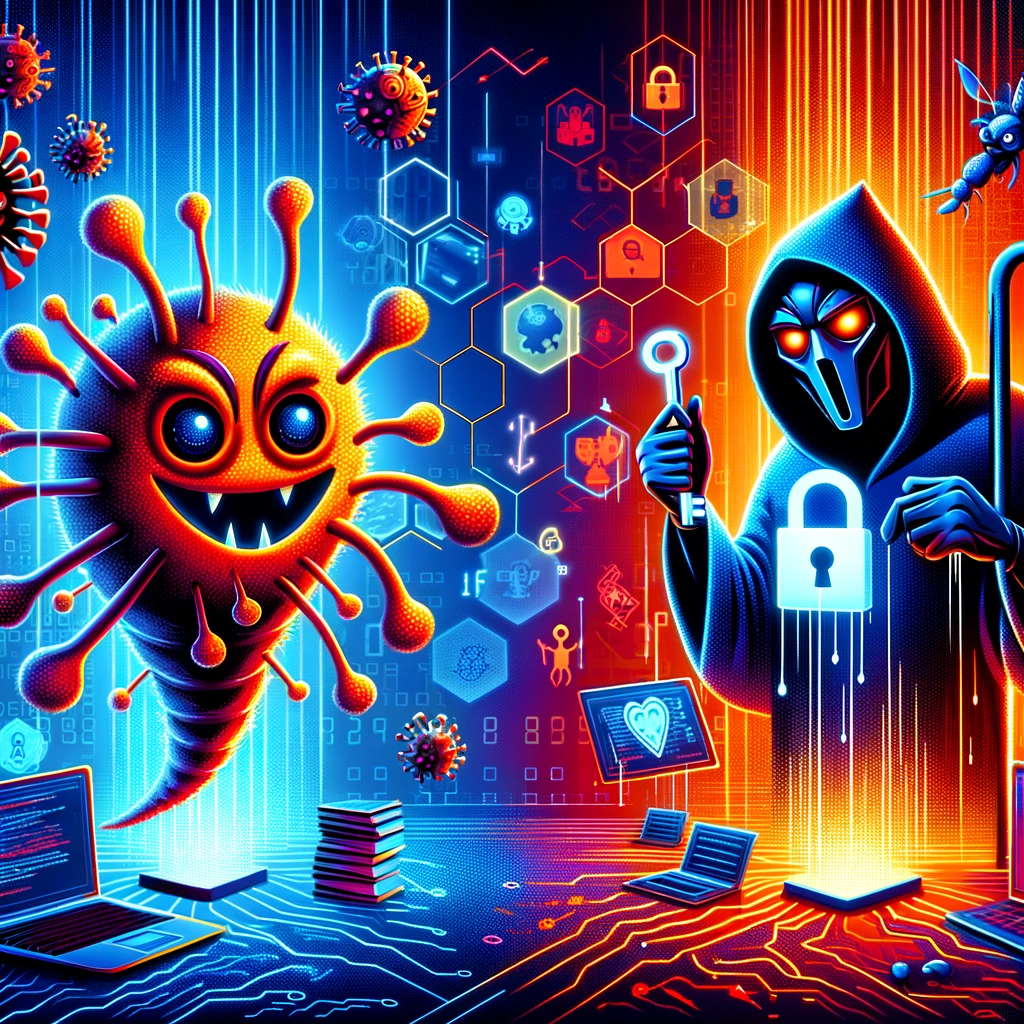Malware and ransomware are types of malicious software designed to harm or exploit any programmable device, service, or network. While both can be highly damaging, they operate in different ways and have distinct impacts.
Malware
Definition: Malware, short for “malicious software,” encompasses a wide range of malicious programs designed to damage, disrupt, or gain unauthorized access to computer systems. It includes viruses, worms, trojan horses, spyware, adware, and more.
How It Works:
- Viruses: Attach themselves to clean files and infect other clean files. They can spread uncontrollably, damaging a system’s core functionality and deleting or corrupting files.
- Worms: Spread across networks by exploiting vulnerabilities, without the need for human interaction (like clicking on a malicious link).
- Trojans: Disguise themselves as legitimate software to trick users into installing them. Once activated, they can carry out their malicious intent.
- Spyware: Covertly collects information from a user’s computer and sends it to a third party without consent.
- Adware: Automatically delivers advertisements to generate revenue for its author. While not always malicious, aggressive adware can undermine security to serve ads, which can lead to malware infections.
Prevention and Mitigation:
- Use reputable antivirus and anti-malware software.
- Keep software and operating systems up to date.
- Practice safe browsing and email habits.
- Regularly back up data.
Ransomware
Definition: Ransomware is a type of malware that encrypts a victim’s files, making them inaccessible, and demands a ransom from the victim to restore access to the data upon payment. Users are shown instructions for how to pay a fee to get the decryption key.
How It Works:
- Encryption-Based: The most common form, where it encrypts personal files and folders and demands payment for the decryption key.
- Locker Ransomware: Locks the victim out of the operating system, making it impossible to access the desktop, apps, and files. The files are not encrypted, but the ransom demand still applies for unlocking the device.
- Scareware: Fake software that acts like an antivirus or a cleaning tool, claiming to have found issues on your computer and demanding money to resolve them.
Prevention and Mitigation:
- Regularly back up data and store it offline or in the cloud.
- Use security software and keep all software up to date.
- Be cautious about unsolicited emails and attachments.
- Enable file extensions to easily spot suspicious files (e.g., .exe files).
Both malware and ransomware represent significant cybersecurity threats, with ransomware being particularly notorious for its direct financial implications and potential to disrupt organizations and individuals alike. The best defense against these threats includes maintaining strong cybersecurity practices, educating users on potential risks, and implementing robust backup and recovery procedures. Take a look at Inky on our website to learn more about their IT Security Malware and Ransomware offerings.

